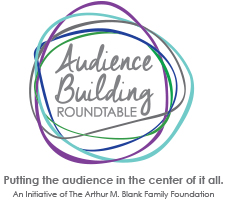By Ellen Walker, Pacific Northwest Ballet (PNB)
Observing participants in a focus group dispassionately dissect your life’s work is a little like strangers disparaging your children – it’s difficult not to feel reactive. In my first such experience, the print collateral that my team had worked so hard on was described by focus group members as “boring,” “stuffy,” “elitist,” and “completely uninteresting.” My first thought: “what is wrong with these people?!” My second thought: “…uh-oh.”
Becoming More Accessible, More Relevant, More Interesting
The focus groups forced us to question old assumptions. Sitting on the other side of the glass while new audience members and long-time patrons provided candid feedback, we learned our assumptions about young people were wrong. We had assumed young people would be drawn to our newer and edgier work. While that assumption made sense at the time, it seems superficial in retrospect. Young people, like all people, don’t want to feel ignorant, uninformed or unprepared to experience something new. We learned that the old, familiar chestnuts – Sleeping Beauty, Cinderella and Swan Lake – were much more likely to attract young audiences to PNB than the edgier new works we were presenting. And, those audience members who were responding with enthusiasm to the new programming were much more likely to have seen a lot of dance, had their fill of story ballets and were ready to take the next step with us.
A research facilitator pegged it right when he told us that we’d become a house of brands, and that we should do the work to become a branded house.
The word “house” stuck with us. What were we doing in our own house to align ourselves with our audience building objectives? We realized that we needed to step back and convey the fundamental importance of our young audience development work to our staff, trustees, and core audience members. It wasn’t enough to offer new programming. We had to develop new relationships. Central to this effort was the redesign of our website. Using the website redesign as our focal point, we rolled out new branding, a fleet of low-price ticket offers and easy online purchasing, all-new video content and a much more robust presence on social media channels. Executive Director David Brown and Artistic Director Peter Boal had their fingerprints on all of it, which was central to buy-in from staff and trustees. The new website was unveiled at staff and board meetings, as were the long-term goals around young audience development. We deepened an existing partnership with Teen Tix, a teens-only ticketing program to Seattle arts performances, and placed ads in the PNB program welcoming teenagers to McCaw Hall. New efforts were made to attract local college students, young professionals, and parents of young children.
Exciting, New Programming Doesn’t “Speak for Itself”
Always mindful of PNB’s existing audience members, every step we took to attract young people was paired with initiatives around retaining our longtime, loyal patrons. We remembered to stress relational over transactional with all of our audiences, and added many more channels for patron feedback. We also let go of the notion that exciting, new programming speaks for itself. It was up to us to provide content, context, and an element of familiarity to our programs. It clicked; teen audience members increased at PNB by over 200%, and other young audience segments grew by over 20%, with sustained participation at 55%.
Leaning in for the Unvarnished Feedback
Last summer, we launched a new round of focus groups and research designed to inform another audience building initiative. We leaned in for the unvarnished feedback, knowing that we’d survive the discomfort, and arrive somewhere better.
Keywords: Focus groups, younger audiences, website, low price ticket, video content, retaining patrons, realtional, feedback
